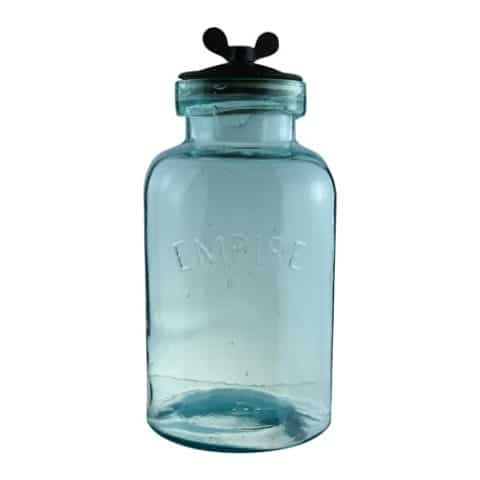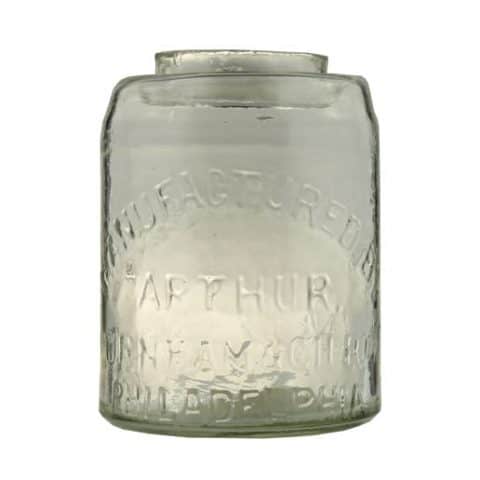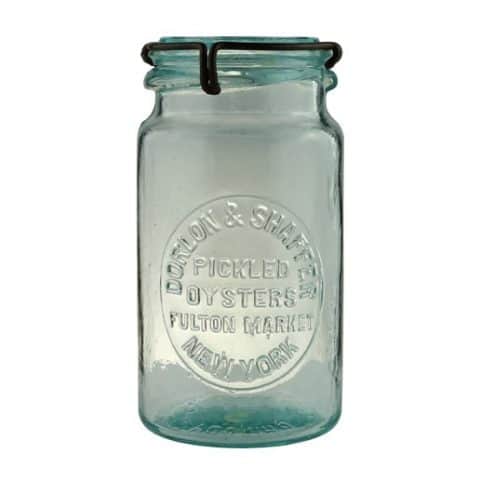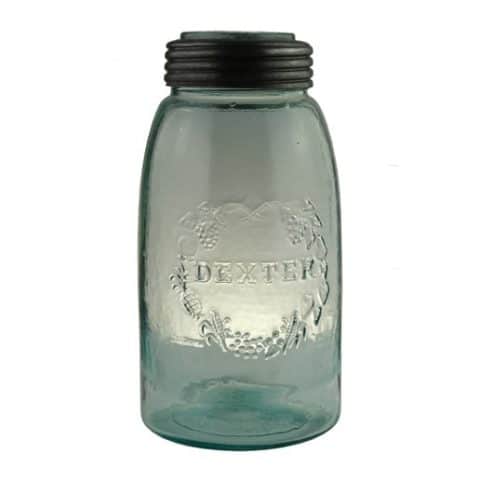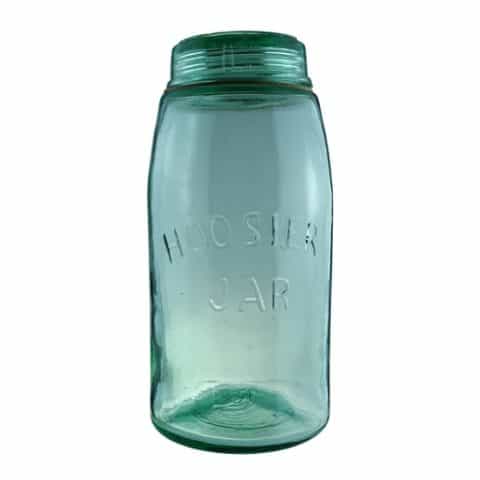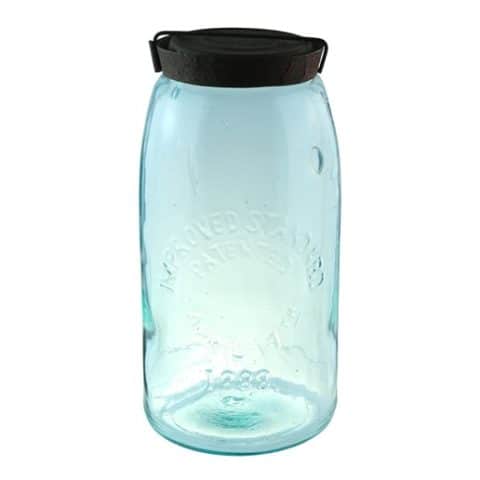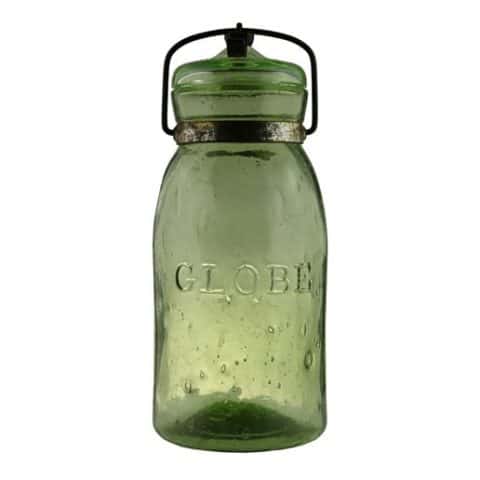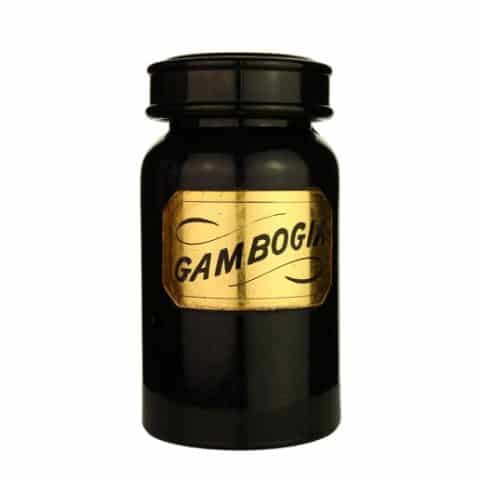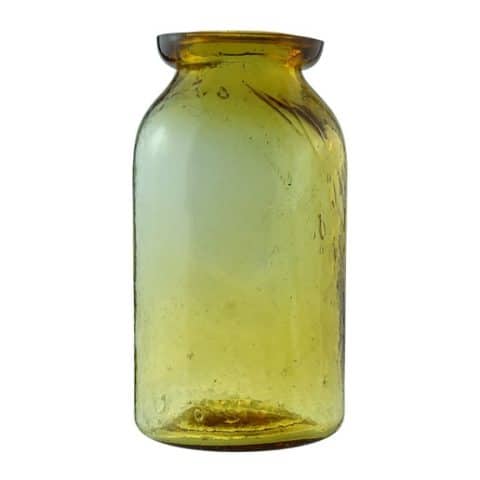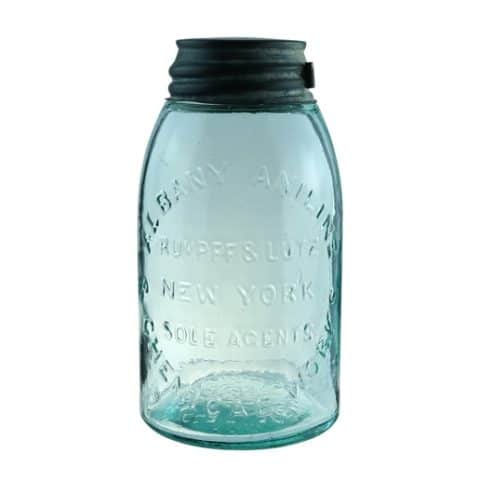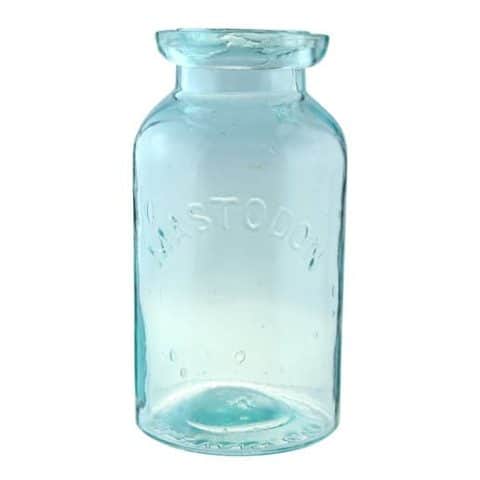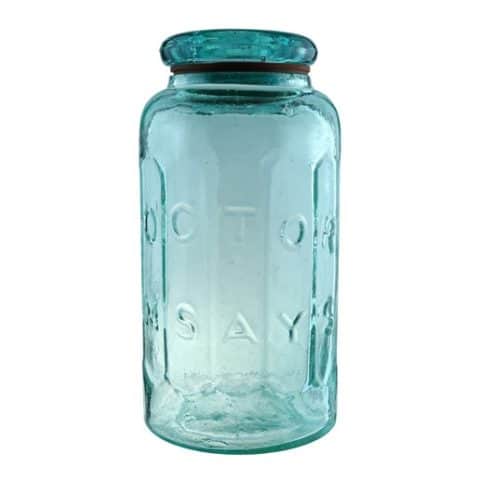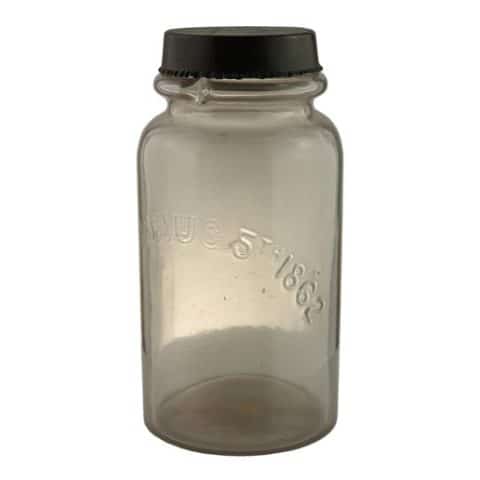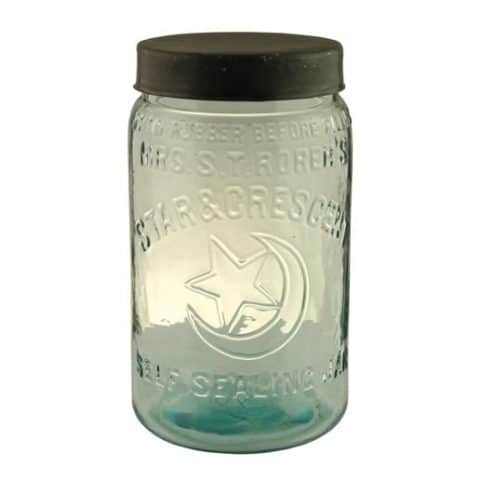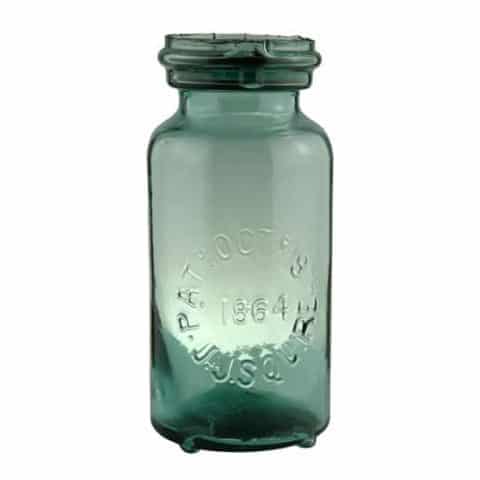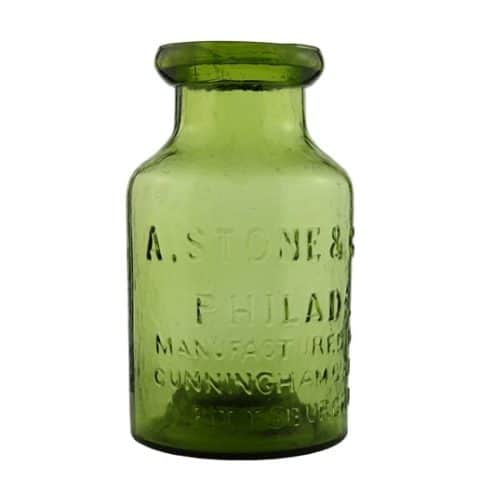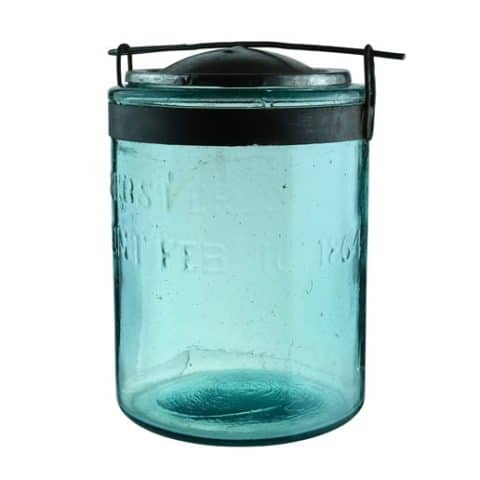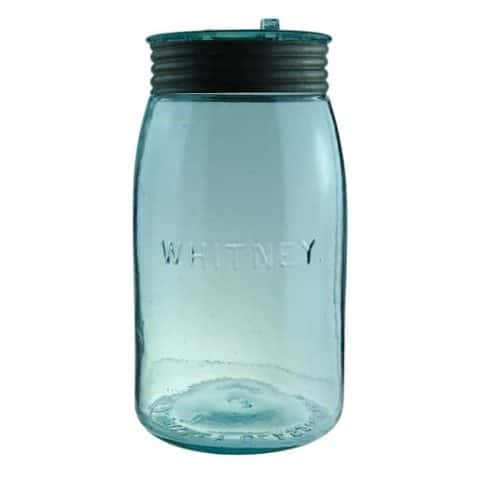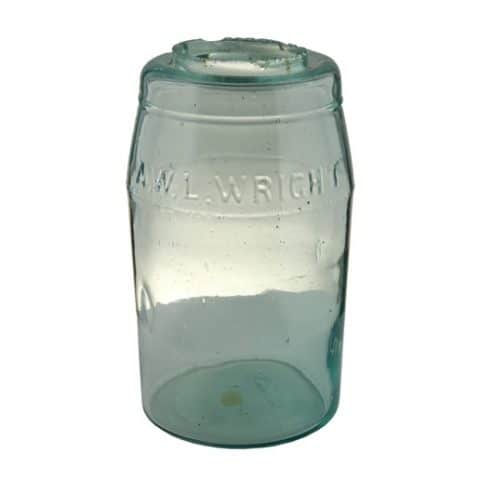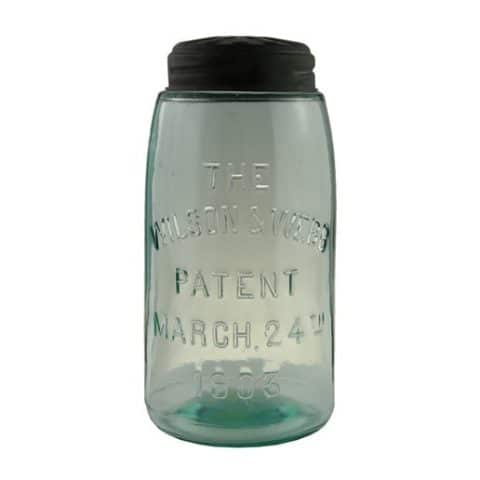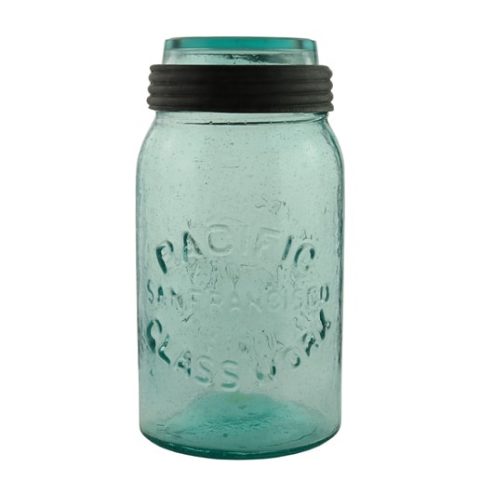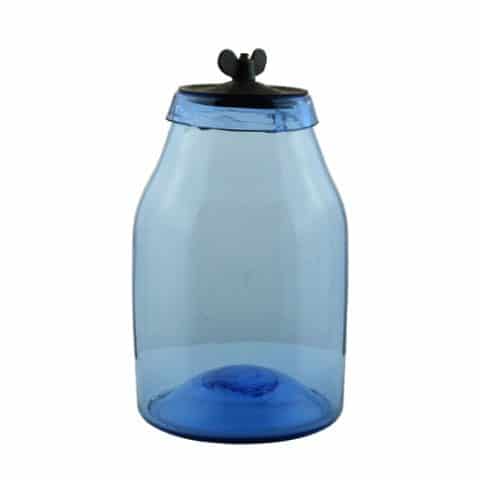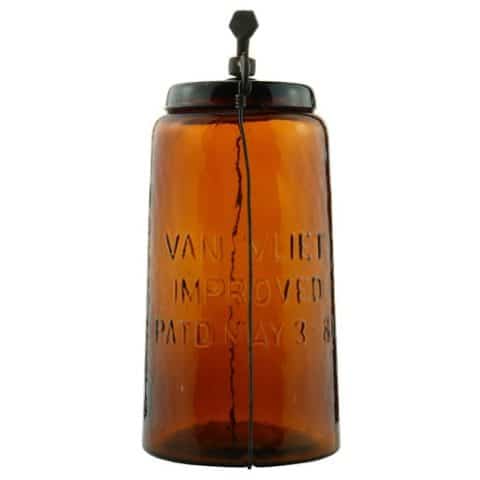MFJCO 12 (Marion Fruit Jar Company)
M. F. J. CO.
12
Marion Fruit Jar & Bottle Co., Marion, Indiana
Base Embossed Pale Yellow Quart
Provenance: Ron Hands Collection

The Marion Fruit Jar & Bottle Co. of Marion, Indiana, was beset by disastrous fires and accidents and was once hit by a tornado that blew off the factory roof. The two principals, Col. John L. McCulloch and J. Wood Wilson, consistently rebuilt and even expanded the business to two other locations, buying existing plants in each case. By 1898, the Marion Fruit Jar & Bottle Co. had numbered its factories. Marion was number 1, with number 2 at the former Dillon Glass Co. plant in Fairmount. The “King City” factory at Converse was number 3. The Marion location specialized in Mason fruit jars and oil cans, although it initially made different jars. Opening in 1888, the firm persisted until the Ball Brothers bought them out in 1904.
Our museum example of a pale yellow with olive tone quart jar was hand blown with a tooled, applied lip. The closure is a wax seal with a grooved ring and metal cap that would use a wire clamp. The jar is base embossed ‘M. F. J. CO.’ (Marion Fruit Jar Co.) in a deep arch within an embossed circle. The copy is a sans-serif typestyle. The number ’12’ is embossed horizontally in a straight line beneath. The rare jar is also reported in amber and aqua glass. This example has great character with various shapes of bubbles in the glass.

With $75,000 in capital and 150 employees, the Marion Fruit Jar & Bottle Works came from Wheeling, West Virginia, and Louisville, Kentucky, with a capital of $20,000 and 90 employees. In 1887, Col. John L. McCulloch and J. Wood Wilson purchased the former Southern Glass Co. in Louisville. They moved the factory to Marion, Indiana, to take advantage of the available natural gas. McCulloch had been a bookkeeper with Southern Glass Co. in 1879, leaving in 1883 to become a bookkeeper and later a salesman for the North Wheeling Glass Co. The term “Colonel” seems to have been an honorary title—like the Kentucky “Colonel.”
McCulloch married Wood Wilson’s daughter, Alice Rebecca Wilson, on July 5, 1883. Wood Wilson was involved in banking his entire life, so his contributions may have been monetary—possibly explaining the continuous rebuilding of the plants after disaster struck. The actual Articles of Association were signed by J. L. McCulloch, J. W. Wilson, and Alice Wilson McCulloch and filed with the Secretary of State in January 1888. The business was to be located in Marion, and the capital stock was $20,000. The plant was in production later that year but burned in a midnight fire in November 1889. The works owned by Wilson, McCulloch & Co. were destroyed by fire, involving a loss from $15,000 to $18,000. Insurance of about $12,000 partially covered the loss. The factory was soon rebuilt.
The October 2, 1890 issue of American Pottery & Glass Reporter noted that Marion Fruit Jar began making the “famous ‘Standard’ oil can” for the Brown & Harter Mfg. Co. of Columbus, Ohio, at that time—as well as “the ‘Dandy,’ another first-class oil can, and one that is commanding a big sale.”
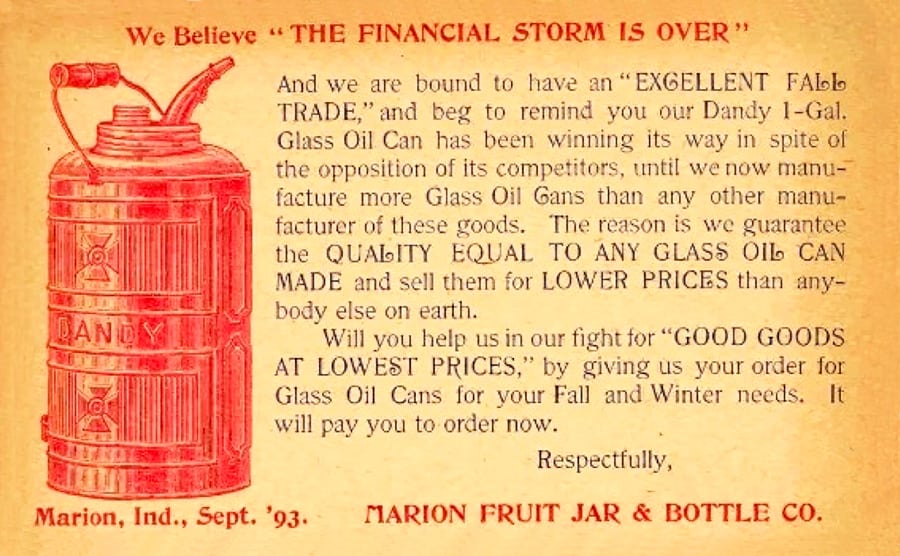
The factory again burned on February 13, 1893, after which it was rebuilt—but a third fire completely destroyed the plant on December 15, 1895. Once again, the persistent pair rebuilt, and this time the factory had a single continuous tank with eight rings.
Although the company retained the original name, it was incorporated in Indiana with $100,000 capital on November 24, 1896. In 1897, the Marion plant had “three furnaces, 40 pots, in operation, making fruit jars and oil cans.” By 1898, the number of pots had increased to 48.
In November 1895, a costly accident occurred at the Marion FruitJar Works when the bottom of the large tank suddenly fell out, spilling and ruining a mass of molten glass weighing 120 tons. With the accident, four streams of water were constantly directed upon the molten mass, thus preventing what might have been a disastrous fire. The factory was shut down for two weeks.
In addition, the stamping department (making caps) was destroyed by fire on March 19, 1898, and rebuilt. McCulloch and Wilson installed six Blue machines at the Marion plant between August and November 1899. From 1900 to 1902, the plant used 80 pots (this probably meant rings) to make its products. In 1904, McCulloch was listed as president and secretary, with Wilson as treasurer. At that point, Marion operated six continuous tanks with 52 rings, and the firm refurbished the factory for 11 more machines (including the Fairmount and Coffeybille plants). As noted above, the Ball Brothers bought them out in 1904.
Primary Image: Base-embossed M.F.J.Co. jar imaged on location by Alan DeMaison, FOHBC Virtual Museum Midwest Studio.
Support Image: Auction Lot 757: MFJCo amber wax sealer quart. An early applied mouth wax sealer quart in a medium amber color. Embossed on the base in a circular arrangement: “M.F.J Co.”. This was the logo for the Marion Fruit Jar and Bottle Co of Indiana. Shiny glass with the only damage being some chipped flaking on the outer ring. Rare in this color, and a great-looking example. – Greg Spurgeon, North American Glass, February 2009
Support: Reference to Marion Fruit Jar & Bottle Co. by Bill Lockhart, Beau Shriever, Bill Lindsey, and Carol Serr
Support: Reference to The Argos Reflector, August 16, 1900, Cyclone Hits Marion, the Bloomington Echo, November 15, 1895, Spilled 120 Tons of Molten Glass, the Indianapolis Journal, December 1889, Gas Prosperity at Marion, the Indianapolis News, January 1888, New Incorporations and the South Bend Tribune, November 1889, Wiped Out by Fire.
Join the FOHBC: The Virtual Museum is a project of the Federation of Historical Bottle Collectors (FOHBC). To become a member.












